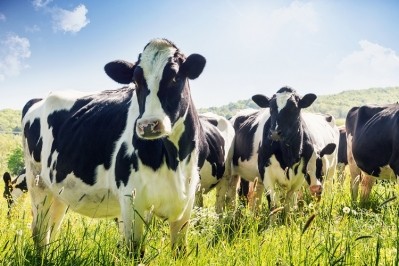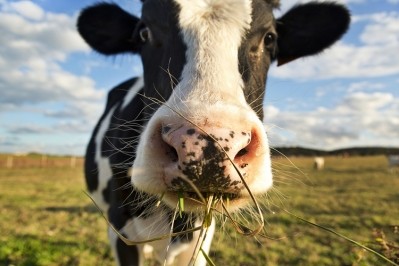Case of mad cow disease confirmed in the UK: What we know so far

The Scottish Government has confirmed that a case of Bovine Spongiform Encephalopathy (BSE), commonly known as mad cow disease, has been identified on a farm in Ayrshire, in southwest Scotland.
What is mad cow disease (BSE)?
Bovine Spongiform Encephalopathy (BSE), commonly known as mad cow disease, is a neurodegenerative disease of cattle. It’s caused by misfolded proteins known as prion and is universally fatal to infected cattle. The time between the onset of symptoms and death can be a matter of weeks or months.
Symptoms of BSE include abnormal behaviour, trouble walking, weight loss, and eventual paralysis.
What we know of the mad cow disease (BSE) outbreak so far
Though few details have been released, it is clear that the Scottish Government and the farming community across the UK, is taking the matter extremely seriously.
“Following confirmation of a case of classical BSE in Ayrshire, the Scottish Government and other agencies took swift and robust action to protect the agriculture sector. This included establishing a precautionary movement ban on the farm,” said Jim Fairlie, agriculture minister for Scotland. “The fact we identified this isolated case so quickly is proof that our surveillance system for detecting this type of disease is working effectively.”
In response to the announcement of this confirmed case, Martin Kennedy, president of the National Farmers Union, Scotland (NFUS) released the following statement.
“While disappointing, and a huge concern for the farmers involved, the discovery of an extremely rare and isolated classical BSE case was always a possibility, and it is testament to the highly effective surveillance programme that we have in place that this case has been identified.
“Those affected by the case at farm level will be doing all they can to assist veterinary authorities in their investigations and any required tracing of animals. If NFU Scotland can assist those farmers affected in any way, then we are here to help.
“We welcome the robust scientific and veterinary advice issued clearly stating that, with strict controls already in place, there are no human health implications. That is hugely reassuring for all.”
History of mad cow disease (BSE) in the UK
The concern Kennedy is referencing in his statement will likely stem from memories of the last major outbreak of BSE in the UK, back in the 1990s. Few who are old enough to remember that outbreak, will ever forget the impact it had on the countryside community and the nation as a whole.
The outbreak was so severe that 180,000 cattle were confirmed to be infected with the disease and a total of 4.4 million cattle were slaughtered to prevent further spread. News bulletins portrayed images of cattle carcases being disposed of on bonfires, and interviews with farmers revealed trauma resulting from the impact on their lives and livelihoods.
The UK was finally deemed to be disease-free in August 1999 when the export ban of British beef was lifted.
How do cattle contract mad cow disease (BSE)?
Bovine Spongiform Encephalopathy (BSE) is contracted by cattle through the consumption of feed, which contains parts of a cow infected with BSE.
The parts of a cow that are not eaten by humans are cooked, dried, and ground into a powder. This powder is then used for a variety of purposes, including as an ingredient in animal feed.
Will this confirmed case of mad cow disease (BSE) affect farming operations in England and Wales?
The certainty with which Martin Kennedy’s statement refers to the detection and containment of this case will serve to reassure farmers both north and south of the Scottish border.
“This is an unusual but not an unexpected event,” a spokesperson for the National Farmers Union for England and Wales (NFU) told FoodNavigator. “It highlights that our surveillance is robust, and this case presents no risk to the food chain.”
This sentiment is echoed by the UK Government.
“Under our robust surveillance programme, approximately 100,000 BSE tests are undertaken annually in Great Britain. The detection of this single case demonstrates the effectiveness of that programme and the strict control measures we have in place. As it has been made clear, there is no risk to food safety or human health in any part of the UK,” Christine Middlemiss, UK chief veterinary officer, told FoodNavigator. “I would urge any farmer who has concerns to seek veterinary advice.”
What are the next steps in handling this confirmed case of mad cow disease (BSE)?
Government officials and industry experts have been quick to try to reassure farmers and the wider community that every necessary precaution is being taken to contain this new outbreak.
“We are working closely with the Animal and Plant Health Agency, and other partners to identify where the disease came from,” said Sheila Voas, chief veterinary officer for the Scottish Government. “I want to reassure both farmers and the public that the risk associated with this isolated case is minimal.”
But the message remains that farmers should remain vigilant.
“If any farmers are concerned, I would urge them to seek veterinary advice," adds Voas.
Is mad cow disease (BSE) dangerous to humans?
Humans can contract a variant of Bovine Spongiform Encephalopathy (BSE). This variant is called Creutzfeldt-Jakob disease (vCJD). The variant is contracted by humans through the consumption of beef from a cow infected with BSE.
According to the US Food and Drug Administration (FDA) vCJD and BSE are not contagious, meaning that a person or cow cannot catch it from being near an infected person or cow. Research from the FDA also shows that people cannot become infected through drinking milk or eating dairy products.
Will this outbreak impact the food industry?
At present, this is believed to be an isolated incident, and as such will have no impact in the food industry. However, this messaging would of course change if the outbreak were to spread.
“There are strict controls in place to protect consumers from the risk of BSE, including controls on animal feed, and removal of the parts of cattle most likely to carry BSE infectivity,” explains Ian McWatt, deputy chief executive of Food Standards Scotland. “Consumers can be reassured that these important protection measures remain in place and that Food Standards Scotland Official Veterinarians and Meat Hygiene Inspectors working in all abattoirs in Scotland will continue to ensure that in respect of BSE controls, the safety of consumers remains a priority.
“We will continue to work closely with Scottish Government, other agencies and industry at this time.”
























